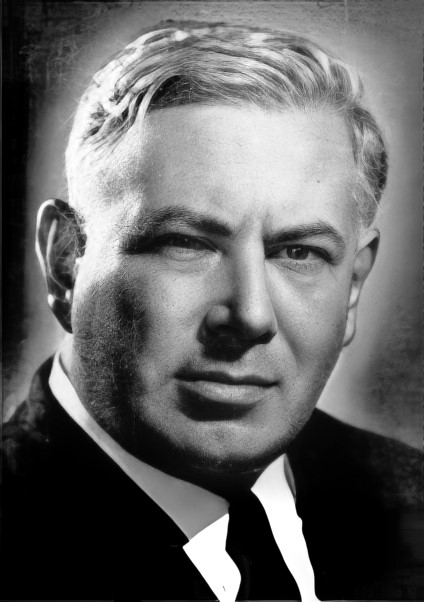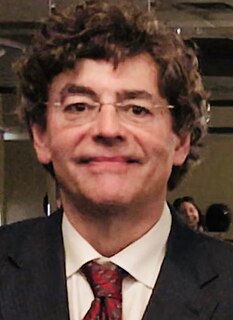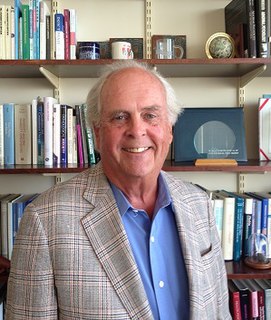Related Research Articles

Batman is a superhero appearing in American comic books published by DC Comics. The character was created by artist Bob Kane and writer Bill Finger, and debuted in the 27th issue of the comic book Detective Comics on March 30, 1939. In the DC Universe continuity, Batman is the alias of Bruce Wayne, a wealthy American playboy, philanthropist, and industrialist who resides in Gotham City. Batman's origin story features him swearing vengeance against criminals after witnessing the murder of his parents Thomas and Martha, a vendetta tempered with the ideal of justice. He trains himself physically and intellectually, crafts a bat-inspired persona, and monitors the Gotham streets at night. Kane, Finger, and other creators accompanied Batman with supporting characters, including his sidekicks Robin and Batgirl; allies Alfred Pennyworth, James Gordon, and Catwoman; and foes such as the Penguin, the Riddler, Two-Face, and his archenemy the Joker.
A superhero or superheroine is a stock character that possesses superpowers, abilities beyond those of ordinary people, and fits the role of the hero, typically using his or her powers to help the world become a better place, or dedicating themselves to protecting the public and fighting crime. Superhero fiction is the genre of fiction that is centered on such characters, especially, since the 1930s, in American comic books, as well as in Japanese media.

William Moulton Marston, also known by the pen name Charles Moulton, was an American psychologist who, with his wife Elizabeth Holloway, invented an early prototype of the lie detector. He was also known as a self-help author and comic book writer who created the character Wonder Woman.

Abnormal psychology is the branch of psychology that studies unusual patterns of behavior, emotion and thought, which could possibly be understood as a mental disorder. Although many behaviors could be considered as abnormal, this branch of psychology typically deals with behavior in a clinical context. There is a long history of attempts to understand and control behavior deemed to be aberrant or deviant, and there is often cultural variation in the approach taken. The field of abnormal psychology identifies multiple causes for different conditions, employing diverse theories from the general field of psychology and elsewhere, and much still hinges on what exactly is meant by "abnormal". There has traditionally been a divide between psychological and biological explanations, reflecting a philosophical dualism in regard to the mind-body problem. There have also been different approaches in trying to classify mental disorders. Abnormal includes three different categories; they are subnormal, supernormal and paranormal.
Psychopathology is the study of abnormal cognition, behaviour and experiences which differs according to social norms and rests upon a number of constructs that are deemed to be the social norm at any particular era.

Barbara Joan Gordon is a superhero appearing in American comic books published by DC Comics, commonly in association with the superhero Batman. The character was created by television producer William Dozier, editor Julius Schwartz, writer Gardner Fox and artist Carmine Infantino. Dozier, the producer of the 1960s Batman television series, requested Schwartz to call for a new female counterpart to the superhero Batman that could be introduced into publication and the third season of the show simultaneously. The character subsequently made her first comic-book appearance as Batgirl in Detective Comics #359, titled "The Million Dollar Debut of Batgirl!" in January 1967, by Fox and Infantino, allowing her to be introduced into the television series, portrayed by actress Yvonne Craig, in the season 3 premiere "Enter Batgirl, Exit Penguin", in September that same year.
Abnormality is a behavioral characteristic assigned to those with conditions that are regarded as rare or dysfunctional. Behaviour is considered to be abnormal when it is atypical or out of the ordinary, consists of undesirable behaviour, and results in impairment in the individual's functioning. Abnormality in behaviour, is that in which is considered deviant from specific societal, cultural and ethical expectations. These expectations are broadly dependent on age, gender, traditional and societal categorizations. The definition of abnormal behaviour is an often debated issue in abnormal psychology, because of these subjective variables.
Normality is a behavior that can be normal for an individual when it is consistent with the most common behavior for that person. Normal is also used to describe individual behavior that conforms to the most common behavior in society. However, normal behavior is often only recognized in contrast to abnormality. In its simplest form, normality is seen as good while abnormality is seen as bad. Someone being seen as normal or not normal can have social ramifications, such as being included, excluded or stigmatized by wider society.
David L. Rosenhan was an American psychologist. He is best known for the Rosenhan experiment, a study challenging the validity of psychiatry diagnoses.
The portrayal of women inAmerican comic books has often been the subject of controversy since the medium's beginning. Critics have noted the roles of women as both supporting characters and lead characters are substantially more subjected to gender stereotypes, with femininity and/or sexual characteristics having a larger presence in their overall character.

Superhero fiction is a genre of speculative fiction examining the adventures, personalities and ethics of costumed crime fighters known as superheroes, who often possess superhuman powers and battle similarly powered criminals known as supervillains. The genre primarily falls between hard fantasy and soft science fiction spectrum of scientific realism. It is most commonly associated with American comic books, though it has expanded into other media through adaptations and original works.
The following outline is provided as an overview of and topical guide to abnormal psychology:
E. Paul Zehr is a Canadian professor of kinesiology and neuroscience, and an award-winning science communicator at the University of Victoria, in British Columbia, Canada. He is well known for his work in the neural control of human locomotion—particularly how the arms and legs interact during walking and neural plasticity associated with exercise training and rehabilitation. Zehr is best known to the general public as the author of the popular science books Becoming Batman: The Possibility of a Superhero (2008), Inventing Iron Man: The Possibility of a Human Machine (2011), Project Superhero (2014), and Chasing Captain America (2018).
Susan Kay Nolen-Hoeksema was an American professor of psychology at Yale University. Her research explored how mood regulation strategies could correlate to a person's vulnerability to depression, with special focus on a construct she called rumination as well as gender differences.

Richard J. McNally is a Professor and the Director of Clinical Training in the Department of Psychology at Harvard University. As a clinical psychologist and experimental psychopathologist, he studies anxiety disorders and related syndromes.
As a fictional character and the archenemy of Batman, the Joker has been represented in a variety of different stories that redefine elements of the character's appearance and personality. Each work typically establishes its own continuity, and sometimes introduces parallel universes, to the point where distinct differences in the portrayal of the character can be identified. This article details various versions of the Joker depicted in works including various alternative universe stories.
Scott O. Lilienfeld was a professor of psychology at Emory University and advocate for evidence-based treatments and methods within the field. He is known for his books 50 Great Myths of Popular Psychology, Brainwashed, and others that explore and sometimes debunk psychological claims that appear in the popular press. Along with having his work featured in major U.S. newspapers and journals such as The New York Times, The New Yorker, and Scientific American, Lilienfeld has made television appearances on 20/20, CNN and the CBS Evening News.
Elaine F. Walker is a psychologist and professor whose research focuses on child and adolescent development, and changes in the brain due to adolescence. Other research interests includes the precursors and neurodevelopment aspects of schizophrenia and other serious mental disorders. She has taken part in writing over 250 articles and six books related to mental health and neuroscience. Walker is the Samuel Candler Dobbs Professor of Psychology and Neuroscience at Emory University.

David H. Barlow is an American psychologist and Professor Emeritus of Psychology and Psychiatry at Boston University. He is board certified by the American Board of Professional Psychology (ABPP). Barlow is known for his research and publications on the etiology, nature, and treatment of anxiety disorders. The models and treatment methods that he developed for anxiety and related disorders are widely used in clinical training and practice. Barlow is one of the most frequently cited psychologists in the world.

Janina Scarlet is a Ukrainian-born American author and clinical psychologist. She is known for incorporating and utilizing popular culture references in treating patients.
References
- ↑ "Why are we so obsessed with superhero origin stories?: Here's a psychologist's take". Salon.com. Retrieved 19 October 2015.
- ↑ "Abnormal Psychology". Palgrave Macmillan. Retrieved 19 October 2015.
- ↑ "Robin S Rosenberg, Ph.D." Santa Clara County Psychological Association. Retrieved 27 October 2015.
- ↑ "Robin S. Rosenberg PhD Full Member (Locator Service Participant)". California Psychological Association. Retrieved 27 October 2015.
- ↑ "Robin S. Rosenberg". Jimei University. Retrieved 19 October 2015.
- ↑ "Comic Con on the Couch: Analyzing Superheroes". Pacific Standard. Retrieved 19 October 2015.
- ↑ Holmes, Linda. "The Id, The Ego And The Superhero: What Makes Batman Tick?". NPR. Retrieved 19 October 2015.
- 1 2 "Investigating the 'Psychology of Cosplay'". The Daily Dot. Retrieved 19 October 2015.
- ↑ "Stanford experiment shows that virtual superpowers encourage real-world empathy". Stanford.edu. Retrieved 19 October 2015.
- ↑ "Industry Professionals, Historians and Scholars Try to Answer, 'What is a Superhero?'". Pop Matters, J.C. Macek III 11 September 2013
- ↑ "SXSW: Does Batman have a diagnosable mental disorder?". Toronto Star, Ben Rayner, Mon Mar 11 2013